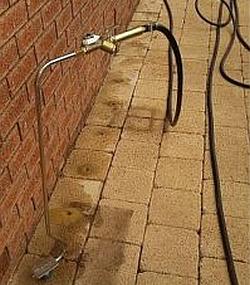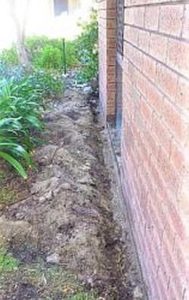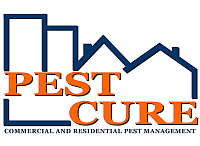
Termite chemical treatments
There have been many advances in termite chemical treatments. No longer used are the very smelly toxic agents of the past. These days chemicals which are water based and almost odourless are used.
Termite chemical perimeters or treated zones only work when there is an unbroken treatment around and under a building.
The type of termite treatment used depends on:
- The cost.
- How long the treatment will last.
- The toxicity of the product.
These can be grouped into repellent & non-repellent chemicals.

Repellent Termite Chemical Treatments:
Termites know that these treatments are there. If they come across them in the soil they will avoid them. If they pass through them they will die. Therefore a continuous treated zone around your property will keep them out.
Bifenthrin: (Biflex, Maxthor).
Bifenthrin has been tried and tested over many years and lasts the longest of all the termite chemical treatments (10 years). It is water based and virtually odorless. It comes at a moderate cost and is also practically non toxic. Because of these reasons bifenthrin is the most commonly used.
Non-Repellent Termite Chemical Treatments:
This class of termiticide has been developed over recent years. For this reason, they do not have the same proven longevity as Bifenthrin. Termites cannot detect these treatments in the soil. The chemical contaminates any termites which pass through the treated zone. Infected termites then pass on the treatment to other termites. In this way, the treatment gets back to the nest.
There are three main non-repellent treatments. All are water-based and virtually odorless:
- Altriset: Firstly this chemical is not on the poison’s schedule and is non-toxic. Secondly, it has a very strong contaminating effect. Finally, it is very expensive and lasts for five years.
- Termidor: (Fipronil) Similarly has a strong contaminating effect, but is more toxic, expensive, and lasts for 8 years.
- Premise: (Imidocloprid) also has a strong contaminating effect, is practically non-toxic, is absorbed by plants, and is harmful to bees. Less expensive than fipronil and also lasts for eight years.
In conclusion, the termite treatment we use depends on your preference when considering:
- Cost
- Longevity
- Toxicity
Note: Termite chemical treatments are not 100% effective
Ideally, treatment needs to be applied around the perimeter of the building. Also around all slab penetrations and along all construction joints.
 Because of their design, many buildings cannot be treated with a continuous perimeter. This can be due to:
Because of their design, many buildings cannot be treated with a continuous perimeter. This can be due to:
- No access to sub-floor areas.
- Lack of access to all parts of the footings.
- Zero lots between buildings.
- Concrete covering vital areas prevents termite chemical treatments from happening.
- Finally obstruction due to, air conditioning units, water storage tanks, and hot water systems.
Termite chemical treatment for existing buildings:
It is normal practice to drill and inject termite treatment through the concrete or pavers around the perimeter of a building. It is a lot more effective to lift paving or cut concrete rather than drill and inject. This is because a trench can be dug down to the footings with no hidden obstructions.
The disadvantage with this is that there is the added time of treatment, cost, and disruption.
Alternatives to termite chemical treatments
NB: If you have gone to the trouble of lifting pavers and cutting concrete it makes good sense to consider the installation of a termite reticulation system.
This will make termite management a lot easier and most importantly a lot cheaper to renew in the future.
A chemical-treated zone is ideal for a house built on a single slab. For more complicated buildings the risk of termite entry increases. It becomes very difficult to treat construction joints, steps, and multiple slabs once a building has been completed.
In these cases, a termite monitoring and baiting system become the logical choice.
